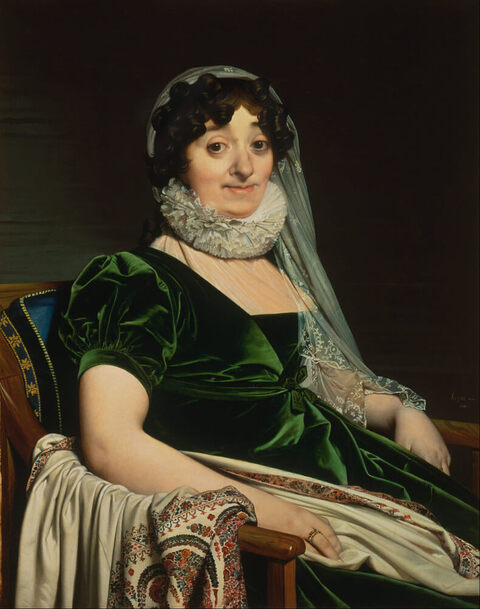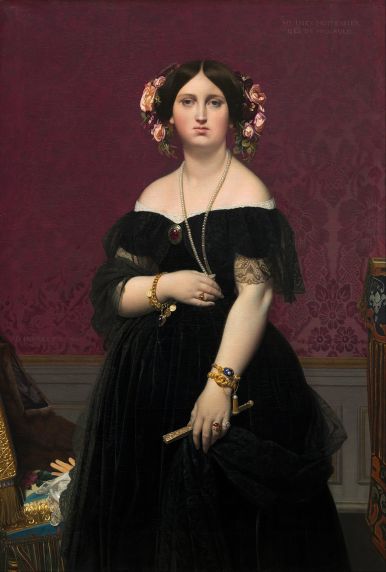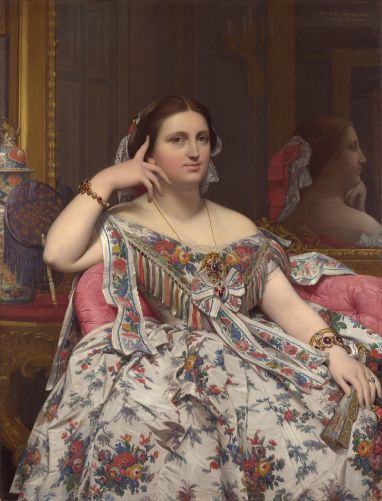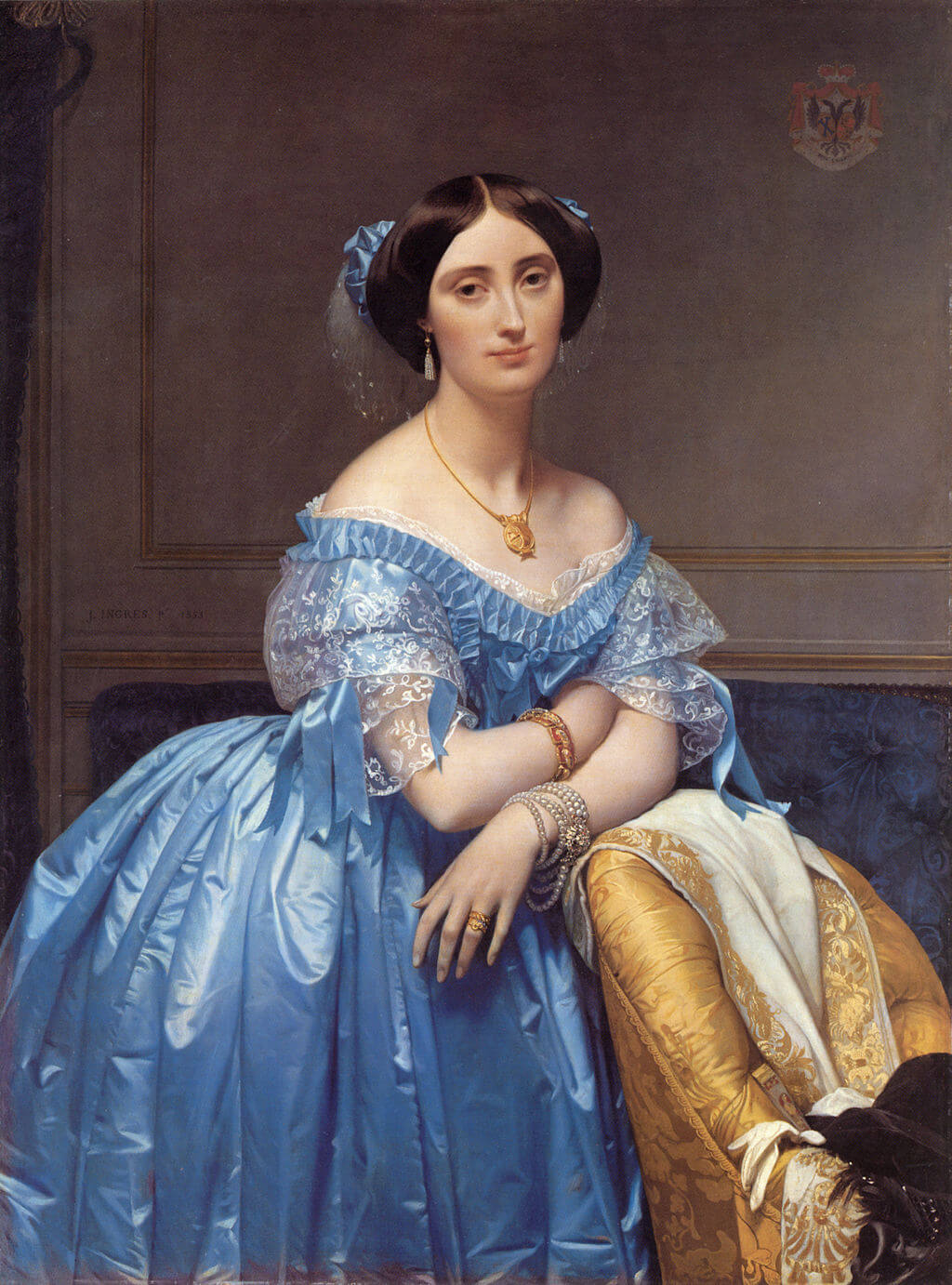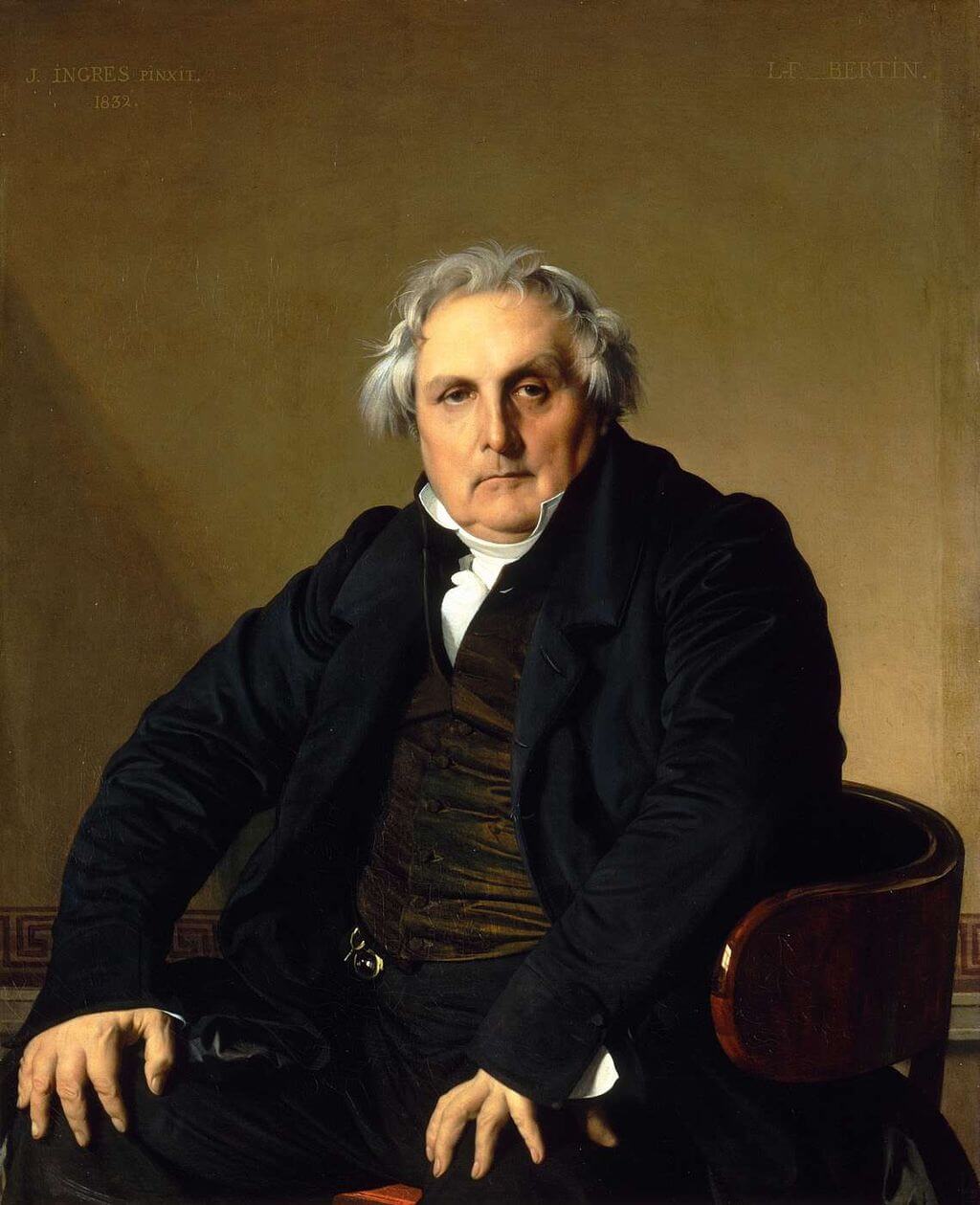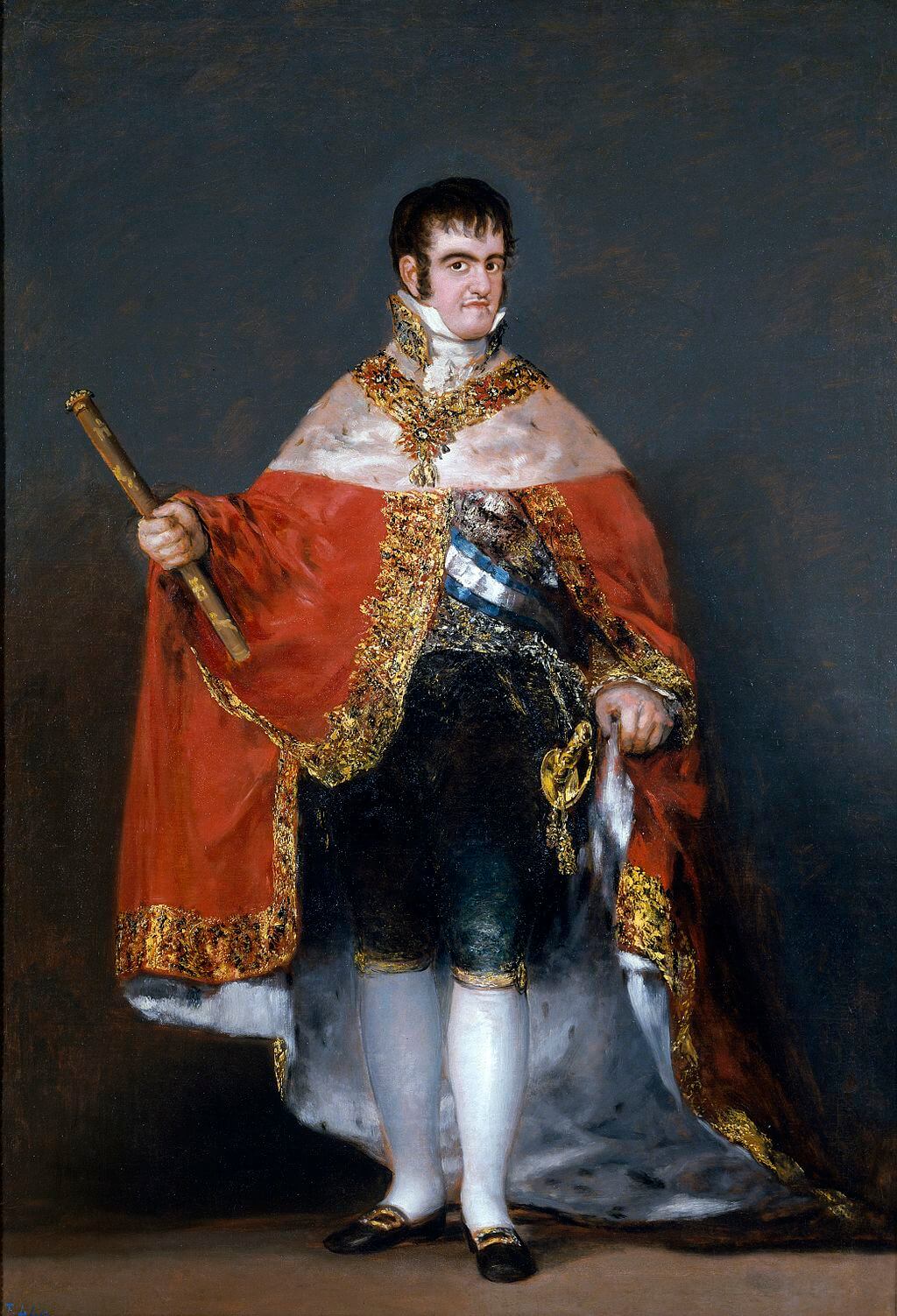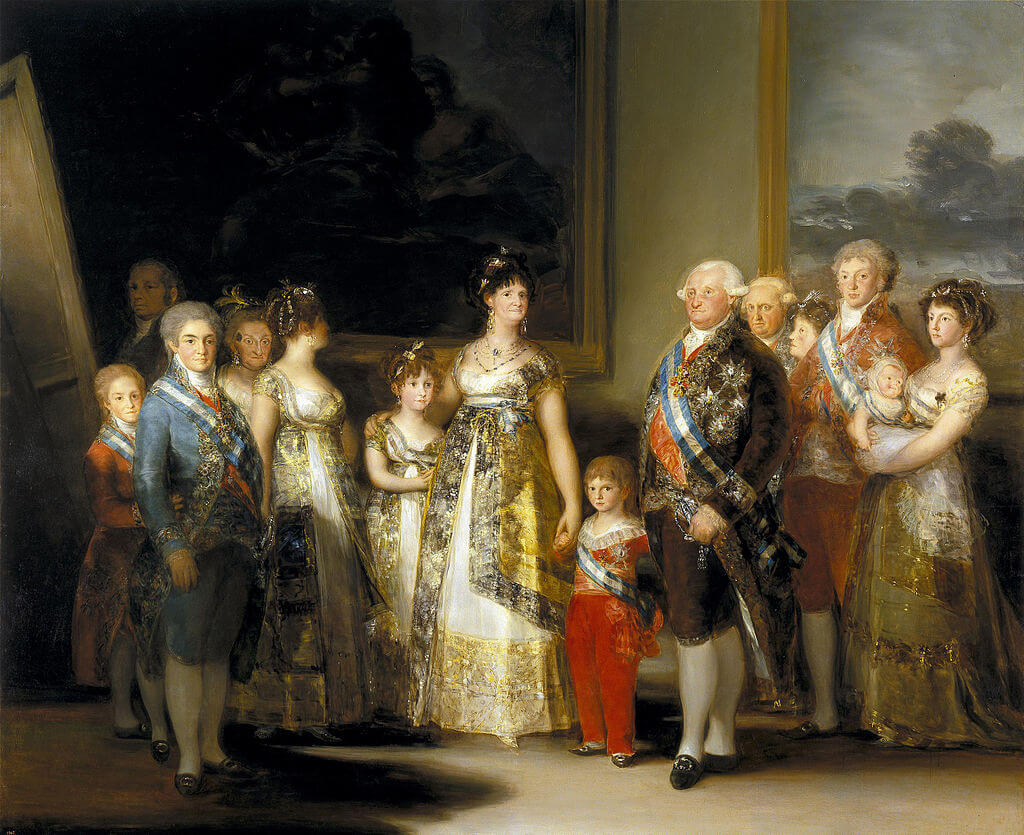|
Where? Gallery 299 of the Philadelphia Museum of Art
When? 1812 Commissioned by? Count Camille de Tournon, the son of the Countess de Tournon What do you see? A portrait of the about 60-year old Countess of Tournon sitting in an armchair against a brownish background. This painting often leads to some discomfort among the viewers. Unlike most other portraits by Ingres, the countess is not a young and beautiful woman. Most people agree that she is not very attractive. Ingres has depicted her quite realistically. For example, her eyes are a bit swollen, she has a very large nose, she has a faint mustache, and she has a bit of a double chin. She also has a wart in between her eyes. However, Ingres has probably also idealized some other parts as the Countess does not look like 60 years old. For example, look at her unwrinkled face and her smooth arms. Instead of her beauty, the painter has focused on depicting her alertness, wisdom, and confidence. She has a small, but confident, smile and looks directly at the viewer. She is dressed in expensive and fashionable clothes. She wears a white transparent veil with flower decorations in her hair, a lace ruff around her neck with a transparent undergarment of lace below it, and a green velvet dress. Over the armchair and on her lap lays a cashmere shawl with flower patterns. Backstory: This painting is also referred to in French as Comtesse de Tournon. Ingres created this painting while he was staying in Rome, which was at that time part of the French empire of Napoleon. The Countess of Tournon was born as Geneviève de Seytres Caumont and is the mother of Philippe-Marcellin Camille de Tournon-Simiane. Between 1809 and 1814, Camille de Tournon was the French Prefect of Rome during Napoleon’s reign. During a cleaning of the painting in 1995 by the Philadelphia Museum of Art, the wart was discovered in between the eyes of the Countess. As the painting stayed for a long time in possession of the Tournon family, it is likely that a family member has applied some extra paint to this work after it was finished to conceal the wart. Who is Ingres? Jean-Auguste-Dominique Ingres was born in 1780 in Montauban in the South of France and died in 1864 in Paris. His father was an artist himself, and from an early age, he provided Ingres with very good art education. In 1797, he became a pupil of Jacques-Louis David, who trained him as a Neoclassical painter. During his life, Ingres lived in Paris, Rome, and Florence. He wanted to become a history painter as that was considered to be the highest level of painting. However, in the early part of his career, he received relatively few commissions for history paintings. Instead, to support his family he created portrait paintings on commission. Portraits by Ingres: Ingres considered himself to be a history painter, but we remember him nowadays mainly because of his beautiful portraits. He has painted a large number of portraits during his career. For example, the two paintings of Madame Moitessier are well-known. The first version hangs in the National Gallery of Art in Washington, DC, and the second version in the National Gallery in London. Two other examples of excellent portraits are Princesse de Broglie in the Metropolitan Museum of Art and the Portrait of Monsieur Bertin in the Louvre.
Fun fact: When a portrait of someone was commissioned, painters usually did their best to depict the person in a beautiful and flattering way. This is also what Ingres usually did as is evidenced by the portraits shown above. However, the Countess of Tournon is not primarily depicted as a beautiful woman.
The realism that Ingres included in this painting is comparable with some of the portraits of the 18th and 19th century Spanish artist Francisco Goya. A good example is the face of King Ferdinand VII of Spain in a portrait that Goya painted of him. Another example is the faces of Charles IV and his family in a painting by Goya in the Prado Museum. Interested in a copy for yourself? Poster or canvas
Written by Eelco Kappe
References:
0 Comments
Leave a Reply. |
Categories
All
|
- Home
- Blog
-
Museums
- Alte Pinakothek
- Art Institute of Chicago
- Baltimore Museum of Art
- Barber Institute of Fine Arts
- Bargello
- Barnes Foundation
- British Museum
- Church of Sant’Anastasia
- Cleveland Museum of Art
- Courtauld Institute of Art
- Detroit Institute of Arts
- Frans Hals Museum
- Galleria Borghese
- Gallerie dell'Accademia
- Getty Museum
- Guggenheim
- Hermitage Museum
- Kunsthistorisches Museum
- Kunstmuseum Basel
- Legion of Honor Museum
- Louvre
- Mauritshuis
- Metropolitan Museum of Art
- Musee d’Orsay
- Museum of Fine Arts in Boston
- Museum of Modern Art
- National Gallery in London
- National Gallery of Art
- National Museum in Poznań
- Norton Simon Museum
- Ny Carlsberg Glyptotek
- Palace of Versailles
- Palazzo Pitti
- Palazzo Vecchio
- Petit Palais
- Philadelphia Museum of Art
- Prado
- Pushkin Museum
- Ravenna Art Museum
- Rijksmuseum
- San Diego Museum of Art
- Santa Maria delle Grazie
- St. Peter's Basilica
- Städel Museum
- Statens Museum for Kunst
- Tate Britain
- Tate Modern
- Timken Museum of Art
- Uffizi
- Vatican Museums
- Wallace Collection
-
Artists
- Altdorfer
- Anguissola
- Berlin Painter
- Bosch
- Botticelli
- Boucher
- Bronzino
- Bruegel the Elder
- Brunelleschi
- Cabanel
- Caillebotte
- Canova
- Caravaggio
- Carpeaux
- Cezanne
- Cimabue
- David
- Degas
- Delacroix
- De Maria
- Donatello
- El Greco
- Fontana
- Fra Angelico
- Fragonard
- Gauguin
- Gentileschi
- Gericault
- Gonzalez-Torres
- Goya
- Hals
- Hogarth
- Hokusai
- Ingres
- Leonardo da Vinci
- Lippi, Filippo
- Longhi, Barbara
- Lorrain
- Makovsky
- Manet
- Massys
- Matisse
- Merian
- Michelangelo
- Mochi
- Modigliani
- Monet
- Panini
- Parmigianino
- Perugino
- Picasso
- Pisanello
- Raphael
- Rembrandt
- Renoir
- Reynolds
- Rivera
- Rodin
- Rubens
- Scultori
- Seurat
- Steen
- Tintoretto
- Titian
- Toulouse-Lautrec
- Turner
- Uccello
- Van der Weyden
- Van Dyck
- Van Eyck
- Van Gogh
- Van Hemessen
- Vasari
- Velazquez
- Vermeer
- Veronese
- Vigée Le Brun
-
Locations
- Books
- About Us

